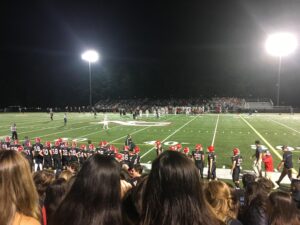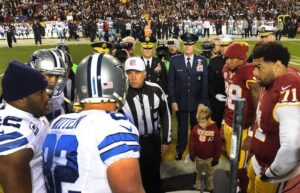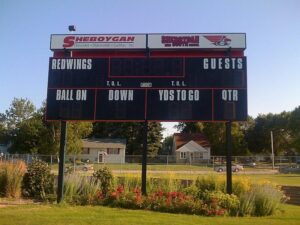We may earn money or products from the companies mentioned in this post.
Why Is It Called The Flat In Football
The term ‘flat’ in football is used to describe the trajectory of a receiving route, often utilized by running backs for short passes.
This term originated to denote a horizontal passing route close to the line of scrimmage, providing quick and efficient options for the offense. In countries like the United States, ‘the flat’ is a fundamental component of offensive strategies, allowing teams to exploit space and create mismatches against defenders.
Historical Origins of the Term
The term ‘flat’ in football emerged during the mid-20th century to describe the lateral movement of running backs in specific areas on the field. When executing a flat route, running backs sprint parallel to the line of scrimmage towards the sidelines. This lateral path allows them to quickly receive short passes from the quarterback. The flat route is a fundamental part of offensive strategies, especially in situations where the defense is applying pressure or when a quick pass is needed to gain yards.
Defenses have adapted to counter the effectiveness of the flat route by assigning linebackers or defensive backs to cover this area of the field. By recognizing the cues that indicate a flat route is being executed, defenders can react swiftly to minimize the gain or even intercept the pass. Over time, the term ‘flat’ has become ingrained in football lexicon, symbolizing the strategic battle between offense and defense in this vital area of the field.
Evolution of the Term in Football
Emerging from its historical roots, the term ‘flat’ in football has undergone a transformative journey, reflecting the continuous evolution of offensive and defensive strategies in the game. Originally inspired by the flat trajectory of receiving routes and the emphasis on lateral movement, ‘flat’ now signifies specific areas on the football field where receiver runs occur.
Coaches and commentators use this term to pinpoint zones requiring lateral movement, typically towards the sideline. The evolution of ‘flat’ has solidified its place in football terminology, describing a vital aspect of play design and strategy.
Understanding the concept of ‘flat’ is essential for players and fans alike, as it influences how plays unfold on the field. This term has become ingrained in the language of football, symbolizing an essential element of the game where precise movements along the line of scrimmage can make a significant impact on the outcome of a play.
Significance of ‘The Flat’ in Play Terminology
Exploring the importance of ‘The Flat’ in play terminology reveals its strategic value in football formations and offensive schemes. The flat in football refers to a specific area on the field outside the tight end or weak-side tackle. This area is vital as it offers high-percentage passing opportunities, often utilized for short passes with a flat trajectory.
Running backs frequently operate in the flat, running passing routes that stretch the defense horizontally. By involving running backs in the flat, offensive strategies can create favorable matchups and confuse defenses. Utilizing the flat effectively not only provides quick and safe passing options but also forces defenders to cover more ground, potentially opening up other areas on the field for offensive gains.
Understanding the significance of the flat enhances overall comprehension of football play terminology and strategies, showcasing the intricate tactics involved in stretching defenses and creating advantageous situations on the field.
Common Usage and Understanding in Football
To grasp the common usage and understanding of ‘the flat’ in football, consider its practical applications in offensive and defensive strategies.
The flat refers to a specific area on the field outside the tight end or weak-side tackle, extending horizontally from the last player on each side of the interior line to each sideline. This imaginary rectangle, roughly eight yards beyond the line of scrimmage, plays a vital role in gameplay.
Offensive players, such as running backs, wide receivers, and tight ends, often run routes to the flat to offer quarterbacks short passing options. This allows for quick and efficient pass plays, especially when facing pressure from the defensive line.
Defensively, understanding the flat helps in coverage and containment, as defenders must react swiftly to prevent successful passes to this area.
Influences on Modern Football Strategy
With the evolution of offensive tactics and the increasing emphasis on versatility, modern football strategy has seen a significant shift towards maximizing the utilization of all areas of the field, including the flat.
In today’s game, running backs and tight ends are frequently targeted in the flat area, taking advantage of mismatches in pass coverage. Defenders must be quick to react and make tackles in space, as passes to the flat often result in short gains but have the potential for explosive plays.
Utilizing the flat effectively stretches the defense horizontally, creating opportunities for receivers to gain yards after the catch. Teams strategically design plays to exploit the flat, with routes typically extending to about eight yards from the line of scrimmage.





